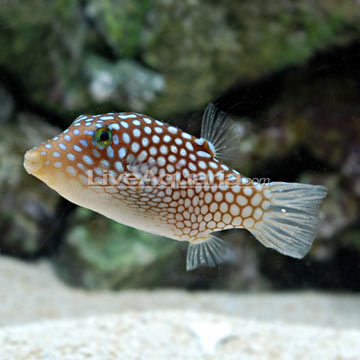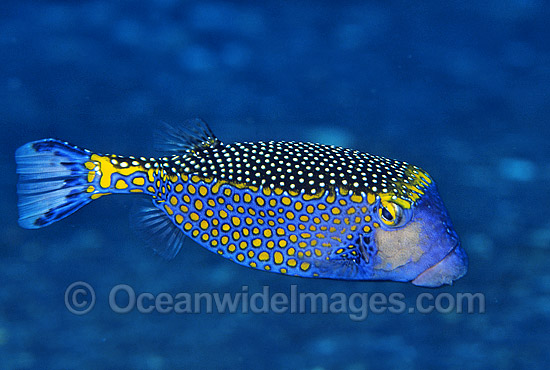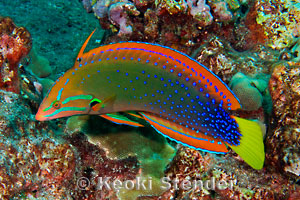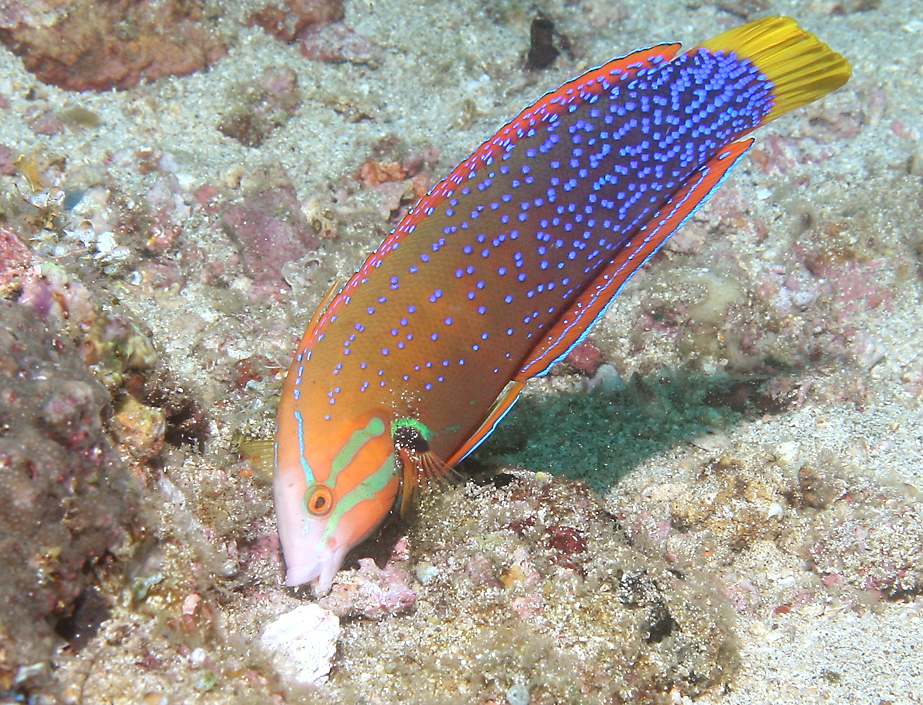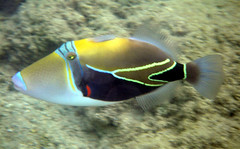 A beautiful fish!!
A beautiful fish!!
The black triggerfish, Melichthys niger, called Humuhumu'ele'ele in Hawaiian, is a blimp-shaped triggerfish with bright white lines running along its dorsal and anal fins. When in the water, it appears to be completely black. However, if it is taken out and exposed to bright light, one can see that it is actually of a dark-blue/green coloration.
Triggerfishes have a very characteristic way of swimming, propelling themselves through
the water using waving motions of the broadened dorsal (top) and anal (bottom) fins. This kind
of swimming allows them great maneuverability. They can go forward, backward, or even hover
over the reef, but they cannot swim at great speed at length. Thrust for a quick dash into the
protection of the reef is made is made using the broom-like tail. When pursued by a predator,
triggerfishes sometimes make grunting sounds which may serve to warn nearby triggerfish of
danger. The eyes of these wary fish are set high on their heads and can move independently, so
that they can scan the reef for food and predators.
When threatened, a triggerfish dives into a hole or crevice in the reef and wedges itself
into the shelter by erecting the large dorsal spine on the head. The spine is locked into place by a
second, smaller spine behind it and can only be unlocked by the fish itself. Another spine on the
fish's belly also extends to help wedge the fish securely into its shelter. Triggerfish also use this
wedging behavior at night, when they rest within the reef in a preferred shelter hole that they use
over and over.
Triggerfishes have fused teeth and can feed on hard-shelled animals like snails, corals,
shrimp and crabs, and sea urchins. The family contains some of the few fishes that can feed on
the long-spined sea urchins (wana). Their high-set eyes and tough skin allow them to approach
the urchin closely enough to grab the long spines in their teeth. They flip the urchin over and
attack it around its softer mouth area where the spines are shorter. Other triggerfishes feed on
sand-dwelling organisms which they locate by blowing water into the sand to uncover the hidden
prey. A few triggerfishes feed on zooplankton, the small animals that drift in the water above
the reef. The black triggerfish, for example, is often found 15 to 30 feet (4.5-9 m) above the
bottom, plucking food from the water along with the schools of plankton-feeding butterflyfishes
and others.

 I saw this today when we were near the shore getting ready to exit the water.
I saw this today when we were near the shore getting ready to exit the water. 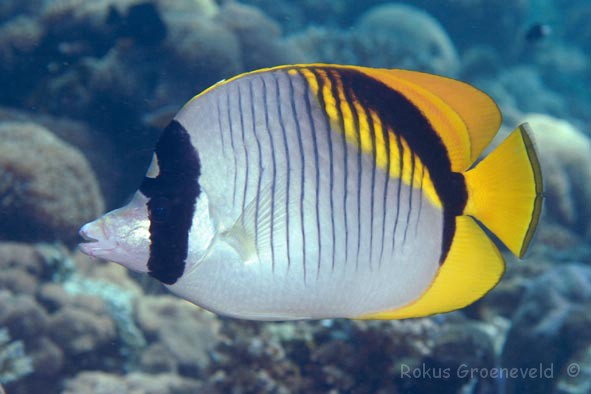


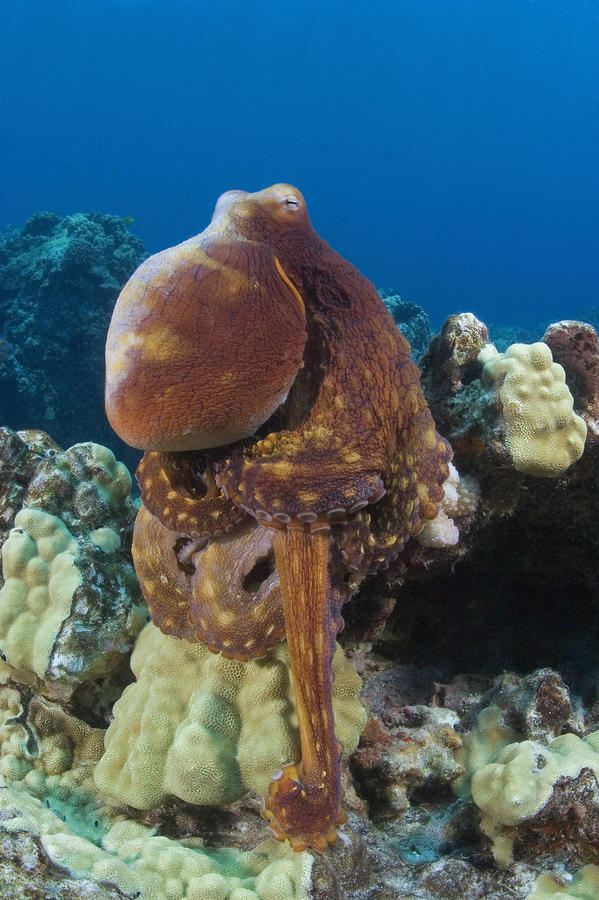





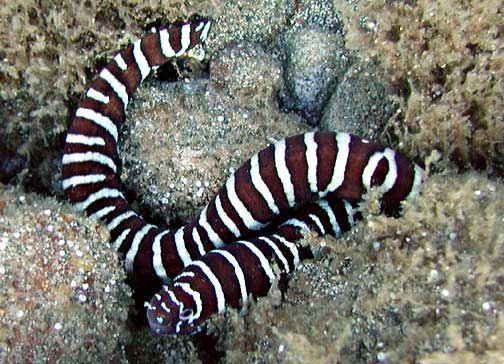
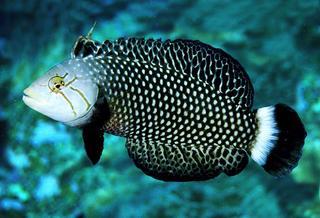



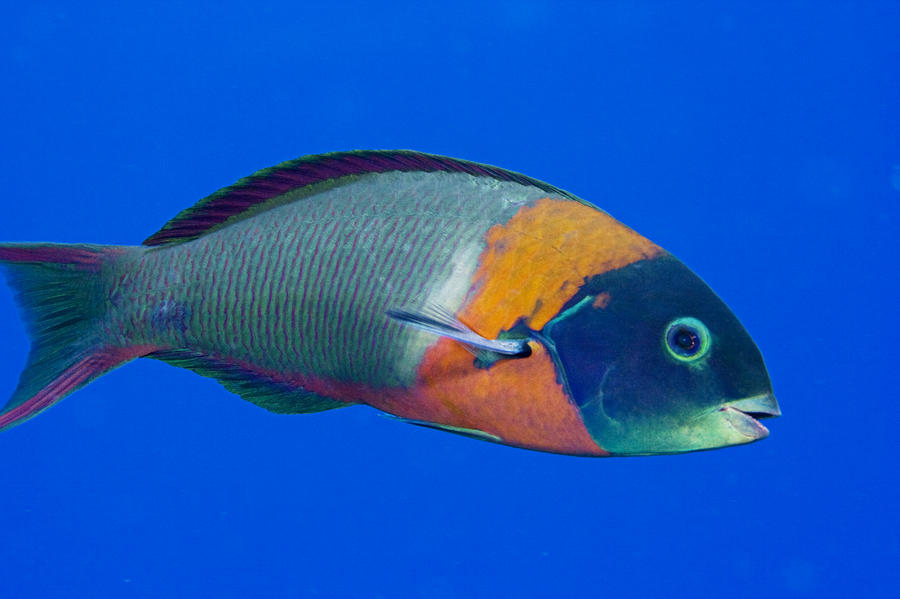



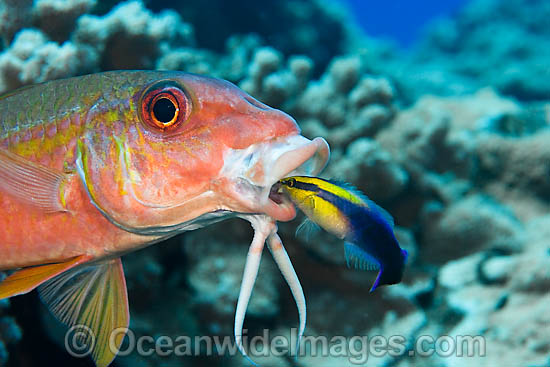




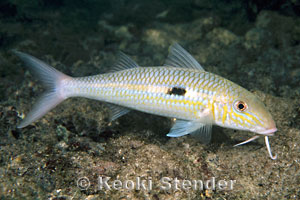











.jpg&w=700&h=500&zc=0)

